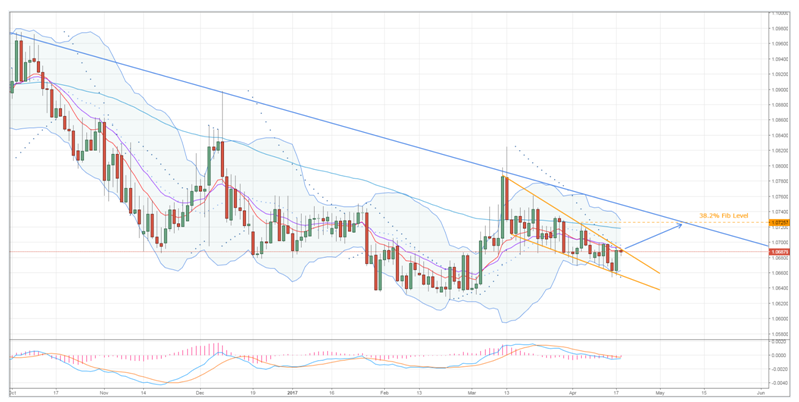Key Points:
- Narrowing wedge likely coming to an end.
- Technical bias shifting towards bullish in the near-term.
- Resulting rally could extend to around the 1.0725 level.
The EUR/CHF could be destined for a near-term breakout over the coming sessions and its recent decline is likely to be put on hold for a short while. Specifically, the pair is now testing the upside of a rapidly narrowing wedge and, unlike like prior challenges, this one could be the real deal. As a result, a closer look at the technical bias could be warranted as we move ahead.
As is shown on the chart below, price action over the past few weeks has been predisposed to the downside but it is also oscillating within a narrowing wedge. As a result, it is tempting to assume that we are now likely to see a repeat performance, specifically, a near-term slip that ends as the pair draws near to the downside of the structure. Nevertheless, this time, there could be some doubt cast on such a prediction as the technical bias seems to be shifting slightly.

For one, both the stochastics and the RSI readings are firmly neutral which means there is little resistance being applied by fears of moving into overbought territory. In addition to this, the MACD oscillator is creeping closer to the signal line which indicates that the recent decline is beginning to run short on momentum. By themselves, these instruments may not instantly signal that the well tested trend line is in much danger of being broken. However, there are two other technical factors that hint that this challenge could be more successful than previous ones.
Namely, the Parabolic SAR and Bollinger Bands® are now signalling that a near-term breakout is actually a fairly likely prospect. Starting with the Parabolic SAR, as of last session, the indicator finally inverted its bias to bullish. Importantly, this is the first time it has been bullish whilst the EUR/CHF has been challenging the upside of the wedge. Moving onto the Bollinger Bands, the upper and lower bands have begun to converge on the basis line which would typically indicate that chances of a breakout are increasing somewhat.
If we do indeed see a breakout, it should extend to around the 1.0725 mark at most. This is largely a result of the long-term trend line which remains staunchly bearish but resistance will also be supplied by a number of other sources. In particular, the 100 day moving average and the 38.2% Fibonacci levels which also intersect around the 1.0725 level.
Ultimately, a lack of much news on either side of the quote should leave the pair somewhat exposed to technical influence over the coming 24 hours but it could still be impacted by headline risk. Notably, the CHF will be reacting to developments in the Syrian and North Korean dramas whilst the EUR still has Brexit and the Greek Debt crises hanging over it. Regardless, we do still expect to see the above forecasted correction take place moving forward, even if a fundamental upset could delay such a rally by a few sessions.
